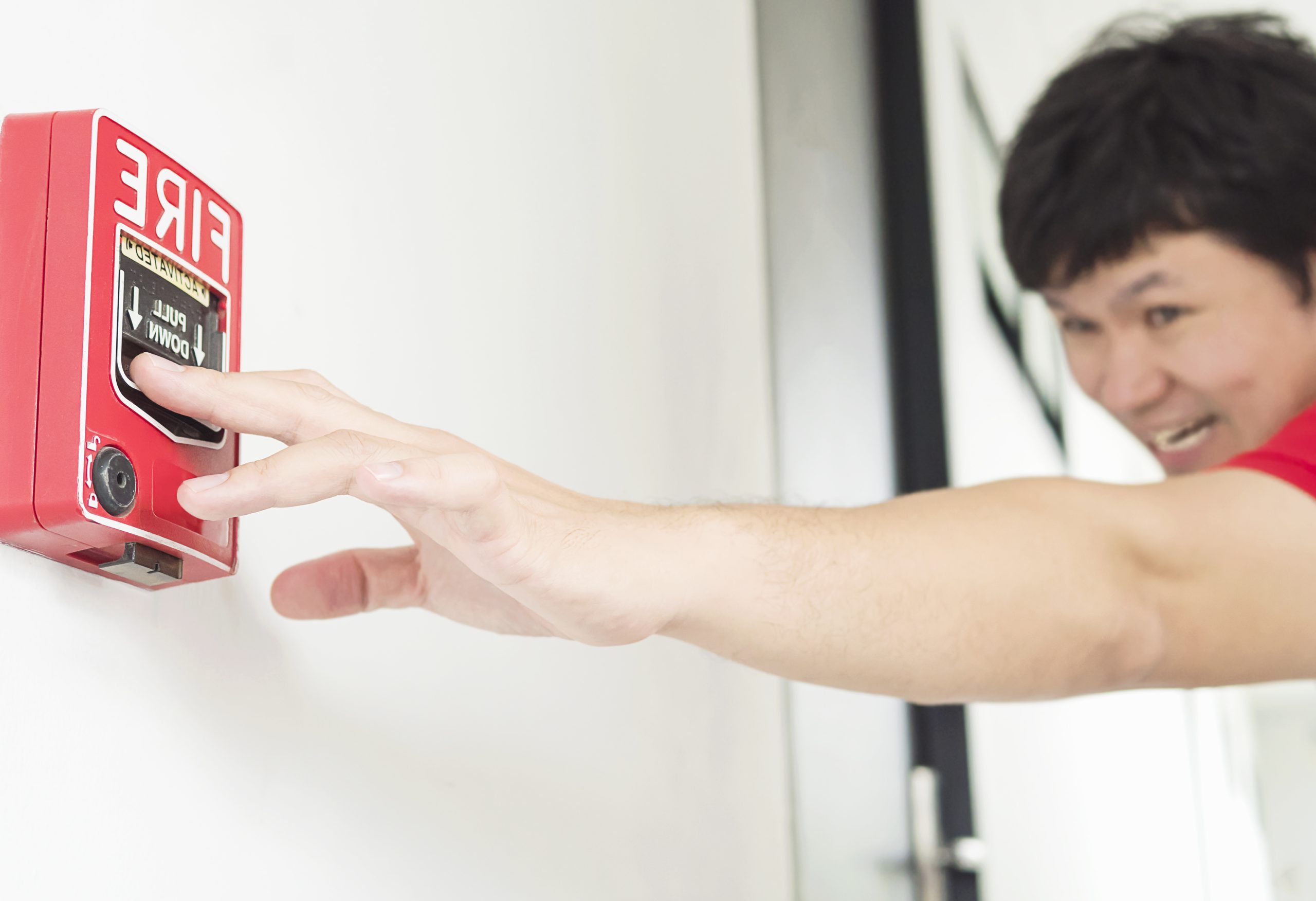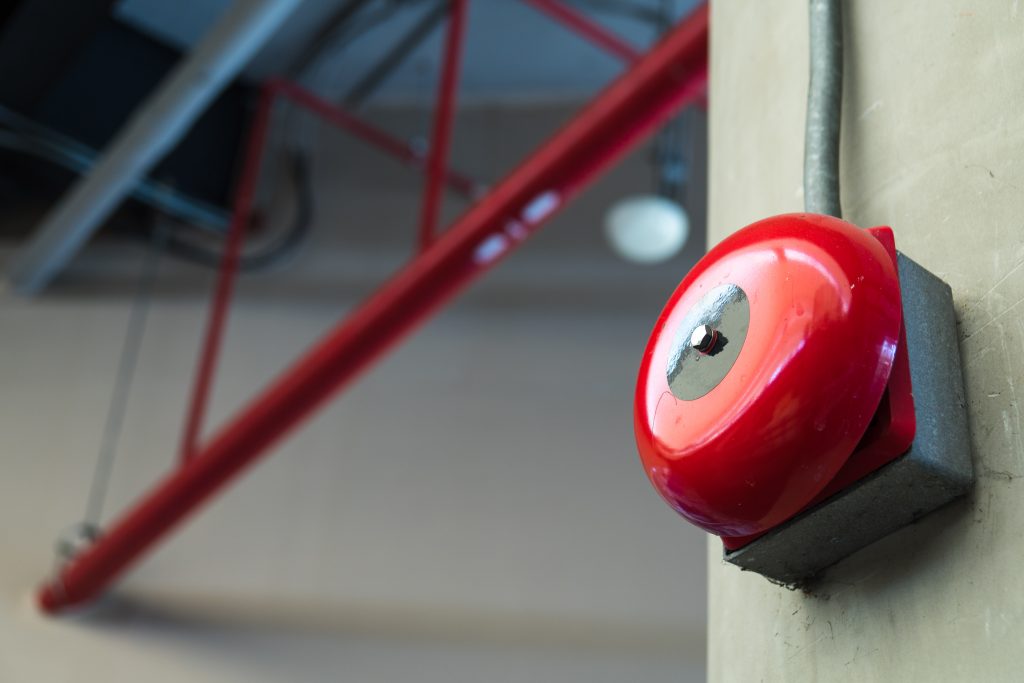Stay Safe with Reliable Fire Alarms at Home

When it comes to home safety, smoke alarms deserve more attention than many families realize. Recent findings show that while nearly all American households own a smoke alarm, testing practices are often lackluster – over 60% of homeowners fail to check alarms monthly as recommended. Even more concerning is that one in three admit to never testing their alarms at all [1].
These statistics highlight an important need for prioritizing smoke alarm maintenance. Properly functioning smoke alarms act as a family’s first line of defense against fires, immediately detecting smoke or dangerous carbon monoxide. Studies show alarms can cut the risk of dying in a fire by half. By taking simple steps to regularly test alarms, families can feel more at ease protecting what matters most in their home.
Key Takeaway
- Fire alarms can detect smoke and carbon monoxide to rapidly alert people inside the home.
- Proper testing and maintenance of fire alarms on a monthly basis is important for them to function properly in an emergency.
- Different types of fire alarms exist to meet various household needs like standard battery-powered units or smart alarms with advanced features.
Overview of Fire Alarms
Fire alarms help keep homes and buildings safe. When working right, they know fast about smoke and hot fires. This gives time to escape safe and get help calling 911. Alarms answer quick so people don’t get hurt and things don’t get ruined in fires.
There are two main kind of alarms. One runs on wires set up in walls. This kind stays plugged into power. Batteries let other alarms go wherever needed. Both help safety in different ways. Its best having one alarm per floor, especially by bedrooms. That way if trouble comes at night, the noise wakes everyone up fast so they get out safe. Proper alarms looking out watch over families.
Types of Fire Alarms
There are good options when picking a fire alarm for home. Each kind has strengths.
Smoke alarms come in two types. One type finds fast fires quick. The other type is best at seeing slow smoky fires.
Hardwired alarms plug straight into walls. Batteries keep them working if power goes out. This makes sure they can always warn families.
Smart alarms have extra features. They can send alerts to phones and talk, and also check that they work right.
Combination alarms notice smoke and harmful not-air called carbon monoxide. This protects from two dangers in one device.
Choosing the right alarm is important to fit what your home needs. All options want to warn families fast about fires or other issues, letting all get to safety quick. Getting families to safety fast is the most important job for any alarm.
Components of Fire Alarm Systems
Fire alarm systems have key parts that work together for safety in homes and buildings. Understanding these parts helps recognize how well alarms do their important job.
Smoke detectors are what actually sense smoke in the air. They are often placed high on ceilings or walls so they can catch smoke fast.
Heat detectors help in places where smoke detectors may cause false alarms, like the kitchen. These detectors respond when temperatures rise.
Pull stations let anyone manually set off the alarm right away if they spot a fire. They are near exits so people can reach them easily.
Sirens, bells or flashing lights are notification devices that warn everyone when the alarm system detects danger.
All these parts joining together make up effective alarm systems which guarantee people are promptly notified anytime there is a real need to escape quickly. Their teamwork looks out for everyone’s safety.
Importance of Professional Installation
It’s very important alarms get put in homes the right way. A helper trained to do alarms should install them by following the local rules. This helps make sure the alarms always work good and can be trusted in emergencies.
A pro doing the work won’t make mistakes that cause false alarms or break the system. Seeing if they passed a tester from outside also makes you feel better, since it shows they know how to do alarms right. A helper puts alarms in the best places and hooks up all the pieces correctly. When done properly, alarms safeguard homes and families well from fire dangers.
Monitoring and Response
Fire alarm monitoring is an important way to stay extra safe from fire. These services connect alarms straight to the fire department. That way, as soon as an alarm goes off, emergency teams are immediately notified. This allows help to come even faster, which is really important during a fire.
It’s best to properly care for the home’s alarm system too. Regular check-ups help ensure all parts keep working correctly so they can do their job protecting the family when it matters most. With monitoring services, families can rest easier knowing assistance is just a phone call away if ever needed.
Maintenance of Fire Alarms

Fire alarms need proper care to work well at their important job. Here are some steps that help alarms stay capable in protecting families:
Every month, push the button on alarms for a quick test to hear that the sound is loud and clear. This check shows they’re prepared.
Battery alarms rely on batteries, so swapping them out at least yearly prevents alarms from going quiet when batteries run low.
Dust and dirt harm how smoke detectors spot danger, so regular cleaning keeps them sensing trouble the right way.
Scheduling annual appointments lets pros confirm that all pieces of alarm systems stay in good shape as time passes.
Following these maintain routines helps ensure alarms will always alert everyone promptly if danger arises. Families can feel safer with alarms that get this care.
Common Concerns with Fire Alarms
Fire alarms help families stay safe, but false alarms cause problems too. A lot of times alarms go off when there isn’t really smoke or fire. This often happens from regular things like dust building up or smells from cooking [2].
To stop false alarms, regularly cleaning smoke detectors helps. Putting the detectors farther from places like kitchens can also stop alarms from going off cause of cooking smells.
If false alarms don’t get better, newer alarm types may help more. Modern detectors have gotten better at telling a real fire from cooking smells or dust, while still alerting families when danger is real. Finding what works can help alarms only make noise when needed, not from normal things.
Legal Requirements for Fire Alarms
Rules for fire alarms are different in each place and kind of building. Most require big buildings to have systems that follow the safety rules. Homes also have guidelines, like needing smoke alarms in sleeping spaces and near cooking food. Finding the local laws on alarms and checking if the home meets them is really important. This protects lives and avoids money fines.
Knowing the alarm rules keeps the family safe and shows how to take care of what matters. Staying current means keeping families out of harm’s way. Properly reading and using the alarm rules is key for safety in every home.
FAQ
How do hardwired smoke alarms differ from battery powered smoke alarms?
Hardwired smoke alarms connect directly to your home’s electrical system and often come with battery backup for extra protection during power outages. While battery operated alarms are easier to install and work during blackouts, ac hardwired smoke alarms offer more reliable, consistent protection. Many hardwired models can also be interconnected, meaning when one alarm detects smoke, all alarms in your home will sound.
What benefits do smart smoke alarms with smart features offer?
Smart smoke alarms combine sensing technology with modern conveniences. These devices send alerts to your phone, provide voice alerts, and monitor air quality. Many smart features include early warning detection and can tell you exactly where the danger is in your home. Some models even run self-tests and send you notifications about low battery chirps before they start.
How do dual sensor and photoelectric smoke detectors work for fire detection?
Dual sensor alarms combine two types of sensing technology – ionization and photoelectric sensors. The photoelectric sensor excels at detecting slow, smoldering fires, while ionization sensors quickly catch fast-burning fires. This combination smoke detector approach provides precision detection for different types of fires, offering better fire protection overall.
What’s the difference between year sealed battery smoke alarms and regular battery smoke alarms?
Year sealed battery smoke alarms come with sealed lithium battery that lasts 10 years – the entire life of the alarm. Unlike traditional battery smoke detectors that need yearly battery changes, these alarms offer hassle-free fire prevention for a decade. Regular battery powered smoke alarms typically use 9V or AA batteries that need replacing annually.
How do smoke and co alarms work with fire alarm control panels for mass notification?
A fire alarm control panel acts as the brain of your system, coordinating between interconnected smoke and carbon monoxide alarms and notification appliances. When carbon monoxide detectors or smoke alarms detect danger, the panel triggers all connected notification devices. This system provides comprehensive life safety protection, especially in larger buildings where mass notification is crucial.
What should I know about maintenance for both Kidde smoke alarms and fire extinguishers?
Regular maintenance of Kidde hardwired smoke alarms and fire extinguishers is key for fire protection. Test smoke alarms monthly, replace batteries annually (unless you have a 10-year sealed battery), and check that fire extinguishers’ pressure gauges point to green. Most fire extinguishers and smoke alarms need replacement every 10 years, even with proper maintenance.
How do wireless interconnect systems work with hardwired photoelectric smoke alarms?
Wireless interconnect technology lets you connect multiple firex hardwired smoke alarms without running new wires. When one hardwired photoelectric smoke alarm detects danger, it sends a wireless signal to other connected alarms. This setup combines the reliability of ac hardwired smoke alarms with easy installation of wireless systems.
What’s important to know about carbon monoxide alarms and their placement?
Carbon monoxide detectors and alarms should be placed on every level of your home, especially near sleeping areas. Many modern units combine smoke and co alarm functions for comprehensive protection. Place them at breathing height since carbon monoxide is slightly lighter than air. Regular testing ensures these life safety products work when needed.
Wrapping Up
The key point is that fire alarms importantly help protect people and buildings from harm. Understanding more about the different alarms, parts and professional installation helps provide better security measures. Carefully maintaining and correctly setting up alarms means they’ll function when relied on most. Alarm protection is vital since they defend against life-threatening danger. Everyone should ensure having alarms done properly and looked after to enhance household safety.
References
- https://www.firehouse.com/community-risk/community-risk-reduction/press-release/55142736/nfpa-national-fire-protection-association-latest-us-smoke-alarm-data-reinforces-critical-importance-of-fire-prevention-week
- https://www.statista.com/statistics/376692/number-of-false-fire-alarms-in-the-us-by-type/